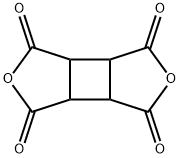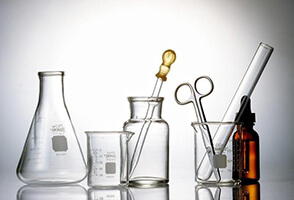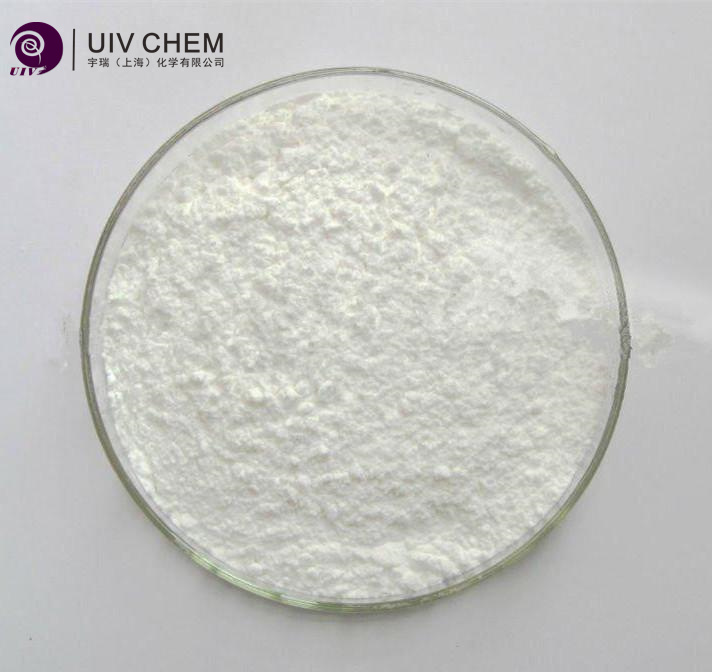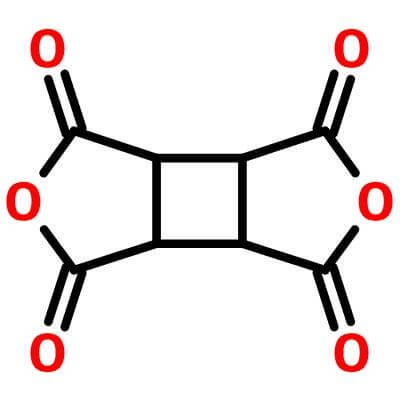| Identification | ||
| Name |
|
Cyclobutane-1,2,3,4-tetracarboxylic dianhydride |
|
Synonyms |
|
1,2,3,4-Cyclobutanetetracarboxylic dianhydride Cyclobutanetetracarboxylic acid dianhydride Cyclobutanetetracarboxylic dianhydride Maleic anhydride cyclic dimer |
|
|
||
| Molecular Structure |
|

|
|
|
||
| Molecular Formula |
|
C8H4O6 |
| Molecular Weight |
|
196.11 |
| CAS Registry Number |
|
4415-87-6 |
| EINECS |
|
224-577-5 |
| Properties | ||
| Melting point |
|
>300 ºC |
|
Boiling point |
|
545.3±50.0 °C |
|
density |
|
1.823±0.06 g/cm3 |
| Safety Data | ||
| Hazard Symbols |
|
Xi |
| Risk Codes |
|
R36/37/38 |
| Safety Description |
|
S26;S36 |

Cyclobutane-1,2,3,4-tetracarboxylic dianhydride uses:
Cyclobutane-1,2,3,4-tetracarboxylic dianhydride and diamine monomer are used for preparation a polyimide (PI), the type of polyimide has excellent electrical characteristics and optical type, with the material prepared the PI film, in addition to having a higher rate cast visible outside, and can withstand high temperatures thirty-four Baidu. Its performance is very good, is the preparation of a liquid crystal display with an ideal material for the film.
Cyclobutane-1,2,3,4-tetracarboxylic dianhydride Reactant for:
1)Preparation of biologically and pharmacologically active molecules
2)Preparation of photosensitive polyimide material for high performance organic thin-film transistors
3)Selective crosslinking of polyimide for photonic devices











